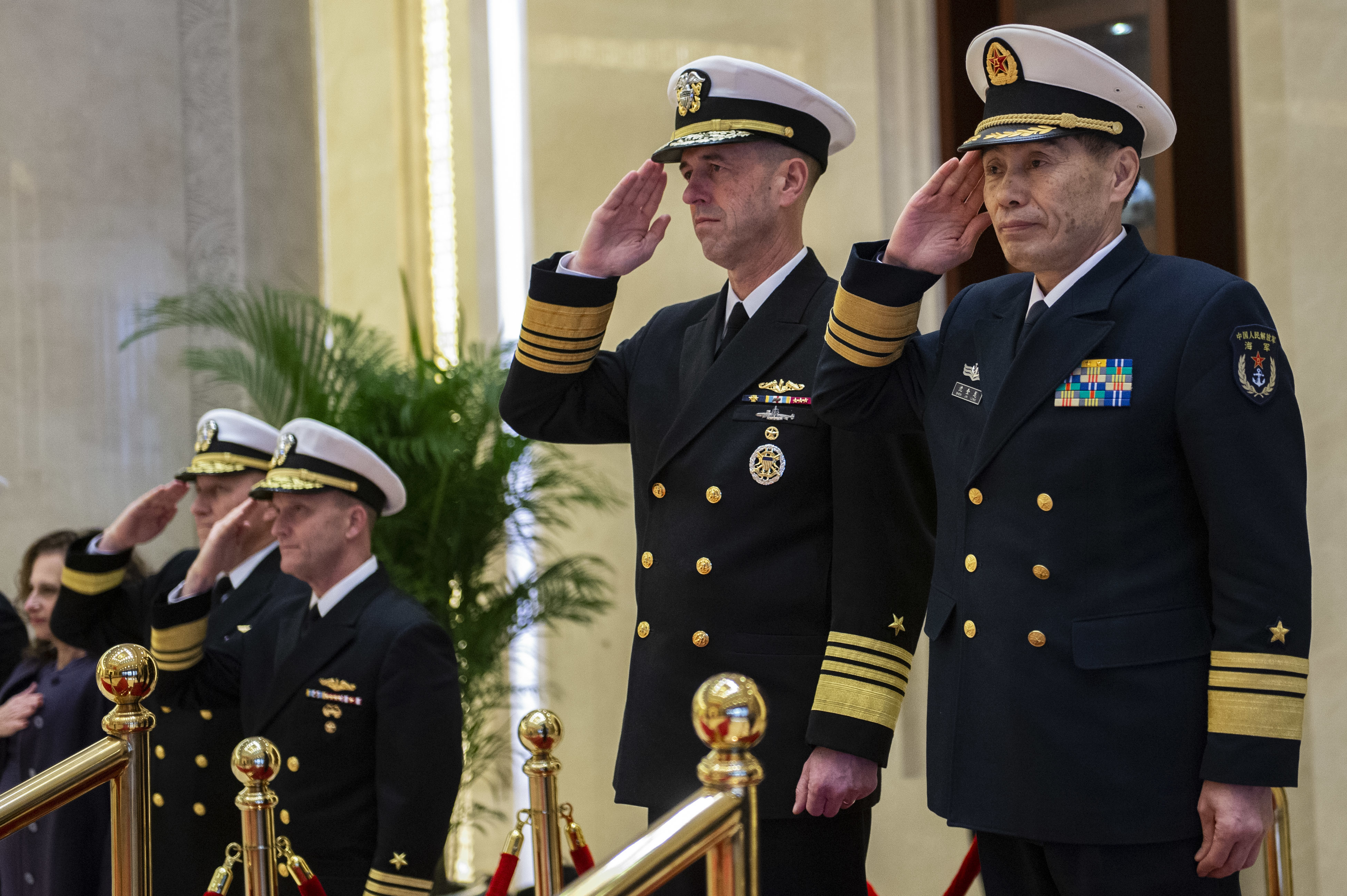
WASHINGTON, D.C. — The Navy’s top officer stressed the importance of his personal relationship with his Chinese Navy counterpart and in continuing a dialogue to minimize the risks from the obvious tensions between the two most powerful Pacific naval forces.
“I don’t think there is any question that we’re in a competition and there are going to be areas where we’re going to have tensions,” Chief of Naval Operations Adm. John Richardson said Jan. 28. He cited the South China Sea as a particular area of “disagreements,” obviously referring to China’s claims of territorial authority over virtually all of the large, heavily transited international waterway.
But in response to a question from the Brookings Institution’s Michael O’Hanlon, Richardson that while “I think there are a lot” of tensions, “I have a good working relationship with my counterpart,” Vice Adm. Shen Jinlong, commander of the People’s Liberation Army Navy.
Richardson cited Shen’s visit and speech to last September’s International Seapower Symposium at the Naval War College in Newport, R.I., and Richardson’s recent visit to China. He said the Chinese Navy officials “were open to everything we asked. I had a very rich visit.”
He strongly endorsed “this idea of continuing to meet, to communicate, to get a better understanding of each other’s intent.”
“As we navigate these areas of disagreement, try to resolve them, we have to do so in ways that minimize risks,” Richardson said. He noted the code for unplanned encounters that govern commanders’ actions when a U.S. and a Chinese naval ship meet in the South China Sea as among the “rules that mitigate risks.”
Asked by a Chinese reporter if the Navy would send an aircraft carrier through the Taiwan Strait, as a destroyer and oiler did a week ago, Richardson said he would not discuss possible future operations, but noted that that passage between mainland China and Taiwan “is international waters.”
Questioned about the state of the Navy after the recent difficult time with three at-sea accidents involving the U.S. 7th Fleet, Richardson noted that he had extensive visits with all levels of Navy leaders and sailors during his recent visit to the fleet and concluded, “we’re in a good place.”
“The readiness, the rigor of everything has really returned to 7th Fleet, across the board.” He said he saw “this new focus on readiness” and people were “talking about the right things,” readiness and warfighting and “not talking as much about manning problems, equipment problems.” But, he added, “we’re not out of it… There is more to be done.”

Asked if he had any concerns about the rapid changes in military technologies, Richardson said, “I’m not too nervous about any particular technology,” and thought the Navy was able to “keep up or outpace just about anyone in the world” in terms of innovation. But, he added, “our (acquisition) system is just slowing us down in getting it out. We need the ability to move with urgency in getting systems from the laboratory out into the fleet.”
In terms of new technologies, Richardson said because of the advances in directed energy technology, “we’re going to be putting stuff on ships this year.” He did not offer any details. But the Navy fielded a 10-kilowatt solid-state laser weapon system on the USS Ponce in the Persian Gulf nearly two years ago and has been testing more powerful lasers.
Pressed by O’Hanlon if the Navy’s stated goal of a 355-ship battle fleet was a real need or just a goal to have a goal, Richardson said that number was the result of numerous studies inside and outside the Navy. The “consistent conclusion,” he said was that to meet its responsibilities to the nation, “we just needed more naval power.” Further analysis led to 355, he said.
But, he added, they are doing those studies again and “the number may change with the new technologies.”




